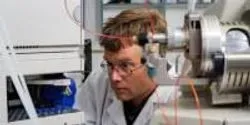Product Resource: Insights

Brownfield sites—mainly abandoned or soon-to-be abandoned industrial facilities—pose huge challenges to governments, communities, and engineering firms charged with restoring them to common uses. At issue are contaminants—chemicals and metals—that if not remediated pose public health concerns.

Combining chromosomes from different organisms started as soon as someone created a hybrid. “In natural breeding,” says geneticist Kulvinder S. Gill of Washington State University in Pullman, “we transfer genes through hybridization—transferring pollen from one plant to another.” He adds, “It can, for example, be pollen from wheat to rye or rye to wheat.”

Big data might bring more benefits to drug discovery than to any other field. For one thing, discovering a new drug turns out to be incredibly difficult. On average, a pharmaceutical company tries about 10,000 drug candidates for every one that ends up on the market. Plus, the process of discovering and developing a new drug costs hundreds of millions of dollars and takes more than a decade—some say more for both measurements.

Sports is big business, which is why leagues and federations are desperate to keep their franchises honest. In the US, Major League Baseball (MLB) received a record $9 billion in revenues in 2014, while the National Football League took in close to $10 billion.

Like great athletes and musicians, cells employed in cell-based assays or as expression systems for biopharmaceutical production are not born, but made. Cell lines that perform specifically and predictably arise from a population of cells that have undergone one or more genetic transformations (transfection) and are subsequently selected for desirable properties such as viability, protein or virus production; high culture density; or binding to drugs or antigens.













